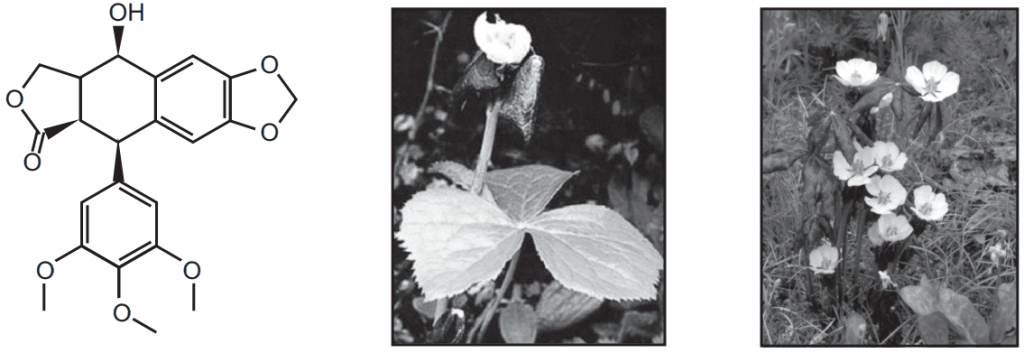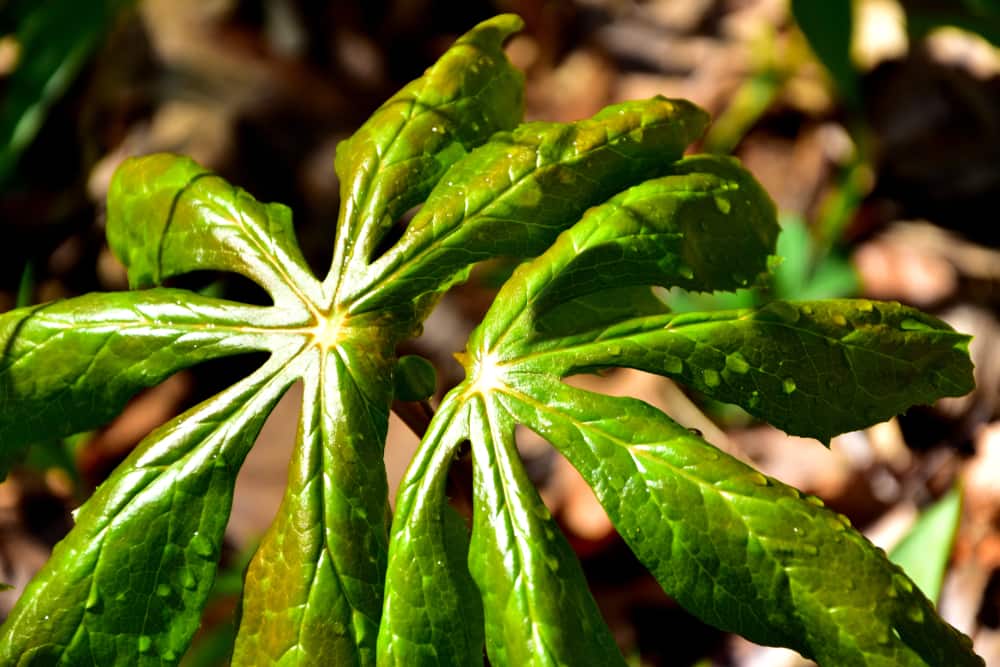The biological source of podophyllotoxin consists of dried roots and rhizome of Podophyllum emodi or Podophyllum hexandrum (family Berberidaceae). The roots and rhizome of Podophyllum peltatum are the sources of American podophyllum. The content of podophyllin (resin) in Indian podophyllum is about 7-15%.
The content of the resin in the podophyllum depends upon the season of collection, area, part of the plant (i.e root or rhizome.). Currently, the content of the resin in the root is more than the rhizome. Podophyllin (resin) extracted from the podophyllum not only contains the podophyllotoxin and dimethyl podophyllotoxin it also contains the podophyllotoxin-1-ο-βD gluco pyranoside, quercitine, kaempferol, and tannins. Podophyllin is light brown to greenish-yellow amorphous powder with a bitter taste to characteristic odour. It is irritating to mucous membrane and eyes having melting point 114-118°C.

Production
Table of Contents
- Root and rhizome of podophyllum emodi is the commercial source of podophyllotoxin. Powder the root and rhizome and extract with methanol or ethanol and concentrate the extract under vacuum.
- Treat the semisolid mass with acidulated water (10 ml HCl in 1000 ml water) at cool to 10°C slowly. Decanted the settled precipitate and wash it with cold water. On drying this precipitate we get amorphous dark brown powder known as podophyllin.
- Extract podophyllin with chloroform and purify by recrystallization with benzene or benzene and ethyl alcohol mixture and then wash with hexane/ petroleum ether which gives the commercial podophyllotoxin.
Utilization
The famous anticancer drugs teniposide and etoposide are semi synthesized by the podophyllotoxin (natural teralin lignan). The production of podophyllotoxin in a total synthetic way is still not economical and the production of podophyllotoxin is based on either use of tissue culture technique or systematic cultivation. Alone with anticancer activity, it also shows purgative, bitter tonic, and emetic properties. In veterinary medicine, it is also used as cathartic for dogs and cats but nowadays its major use is in anticancerous drug synthesis.
Estimation
Weigh the sample and shake it with chloroform for half an hour. Transfer the filtrate to an Erlenmeyer flask that contains 50 ml of petroleum ether (40-60°). Collect the precipitate. Rewash the precipitate and conical flask with the petroleum ether. Dry the precipitate at 70°C for one hour and weigh the podophyllotoxin.
TLC study of Podophyllotoxin
- Solvent – Toluene: Ethyl acetate (5:7)
- Stationary phase: Silica gel G
- Detecting reagent: Sulphuric acid
- Sample: Dissolve in methanol
Compare with a standard by scanning 280nm densitometric scan. Violet colour spot will be seen with approx Rf value 0.39.
Make sure you also check our other amazing Article on : Forskolin
